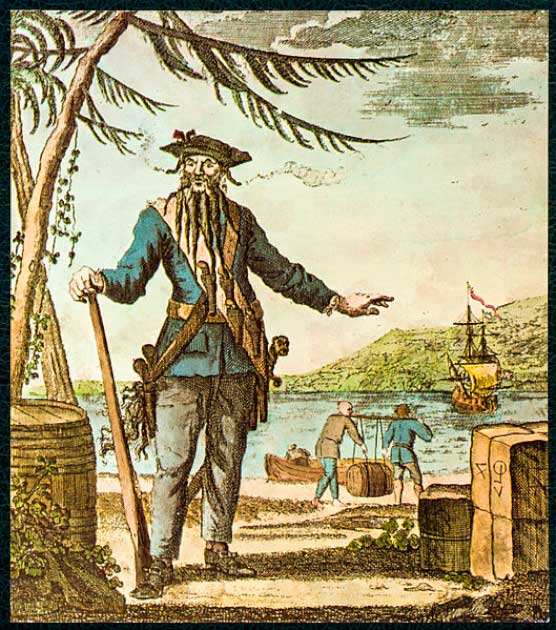History is a cyclical process. Empires rise and fall, new cultures and customs come into being only to fall out of favor or to be wiped out. Great hordes of wealth and power are amassed, only to be looted, destroyed or stolen. Or in some cases to simply disappear.
For not all the fabulous treasures of our collective past have been accounted for. Some we know to have been destroyed, like Caligula’s great pleasure barges, rediscovered in 1929 and destroyed by the Nazis fifteen years later. Some we suspect never existed, such as the legendary El Dorado or the elixir of life in the Amazon.
But some are not so easily dismissed for modern-day treasure hunters. It can be said with a near certainty that there are still great treasures out there, hidden or abandoned, waiting to be found. So dust off your fedora and whip, here are ten treasures you may not have heard of waiting for you out there.
1. The Treasure of Lima
After the defeat of the Inca in the 16th century, Spain ruled an entire continent from their imperial capital of Lima in Peru. Ransacking the indigenous cultures for what material wealth they could get their hands on, a massive Spanish horde of treasure was amassed in the vaults of the capital.
This wealth, accumulated over centuries, remained in Lima until the 1920s when the city was in the verge of outright revolt. Fearing for the safety of the treasure, the viceroy ordered it moved to Mexico where it would be safer. But the problems began when the man recruited to transport the valuables, William Thompson, turned out to be a pirate.
Thompson headed for the Cocos Islands in the Indian Ocean, where the treasure is said to be hidden. His ship was captured, his crew hanged, but Thompson himself escaped, and the treasure was never found.
2. Blackbeard’s Treasure
Blackbeard is truly a larger than life figure and one of the most famous pirates in history. Rejecting the smaller, faster ships most pirates favored, he attacked from his famous ship the Queen Anne’s Revenge, an enormous galleon. And over his career he amassed an enormous fortune.

Other pirates, such as Henry Every, may have hidden more, but such treasures are most likely lost forever. Blackbeard’s haul on the other hand, could potentially be found. The captured Blackbeard confessed to his executioners that he had indeed hidden a king’s ransom, but did not say where.
However much of Blackbeard’s activities throughout his career are known which limits the locations such a treasure could have been hidden. And with the wreck of the Queen Anne’s Revenge having been found in 1996, there remains hope that the legendary treasure of this most famous of pirates might one day be unearthed.
3. Alaric’s Treasure
When the Visigothic King Alaric invaded Italy and sacked Rome in 410 AD, the empire was thrown into turmoil. Rome may not have been the capital of the empire for some time but it stood inviolable and eternal, a symbol of the greatness of the Romans. And it had been 800 years since it was last conquered.
In that time, it had amassed an enormous amount of wealth, and Alaric took the lion’s share for himself. With the empire stung into action by the attack and Roman armies marching to liberate Rome, the Visigoths fled south, taking the vast treasure with him.
- Buried Treasure? The Nazi Gold Train and Project Riese
- Can You Find the Treasure? The Unsolved Code of the Pirate Levasseur
Whilst retreating, Alaric suddenly died. He was buried with his treasure somewhere in southern Italy, possibly beneath the river Busento in Calabria. The tomb of the great king, and the enormous accumulated wealth of Rome, have never been found.
4. The Heirloom Seal of the Realm
This Chinese seal stamp, used by the emperors of China, has been described as possibly the single most valuable lost artifact in history. Carved from a single enormous piece of sacred jade, it was made in 221 BC by Qin Shi Huang, founder of the Qin dynasty and first emperor of united China.
The seal would pass through the hands of successive dynasties and emperors for over a thousand years, considered one of the greatest treasures of the empire and a priceless symbol of imperial power. However, during the “Five Dynasties and Ten Kingdoms” period of the 10th century AD, a turbulent time in imperial China, the seal was lost.

It had been assumed that the Yuan Emperors had possession of this seal at the end of this period. But when the armies of the Ming dynasty conquered the Yuan in 1369, they did not have it, and perhaps they never had. Where the seal went is a complete mystery.
5. The Original English Crown Jewels
King John is not favorably remembered by either historians or in the public consciousness. This is the evil king of Robin Hood fame, seeking to usurp the good King Richard the Lionheart. In truth John ruled for much longer than Richard, but in that time he face mutiny and uprisings, seeing his power curtailed with the signing of the Magna Carta.
Much of his reign was spent on the road as John tried to shore up his failing rule, and the king travelled with his baggage train, including the crown jewels of England. However, John’s decision to send his train on ahead across the mouth of a river named the Wellstream, now known as the river Ouse.
The ford was only passable at low tide and the train was swamped by the river water and washed away. The original crown jewels of England were lost, lying to this day at the bottom of the river, waiting to be found. John himself died later that year.
6. The Great Bell of Dhammazedi
What happened to the largest bell ever cast? Created in 1484 by King Dhammazedi of Hanthawaddy Pegu, it was to be hung in the Shwedagon Pagoda in modern Myanmar. The pagoda survives in all its magnificence, but the bell is not there.
For the bell was stolen by Filipe de Brito e Nicote, a Portuguese explorer who had set himself up as a local warlord and set to work ransacking the region for his own benefit. The bell was lifted from its housing, carried down to the nearby river bank, and floated away on barges lashed together.

However the bell proved too heavy for the barges, and sank underwater somewhere near where the Bago and Yangon rivers join. Lost in the dark waters and exceptionally muddy river bed, nobody has been able to find the bell since.
7. The Loch Arkaig Treasure
In the turmoil following the removal of the Catholic James II from the English throne, Scotland came out very much on the side of the deposed monarch and his offspring against the “Auld Enemy” of England. James’s grandson, “Bonnie” Prince Charlie, would return in 1745 to Scotland to try to reclaim the throne he saw as his by divine right.
He came with a lot of foreign gold to help him, enough to finance an army and march south, it was hoped. However the Scottish seemed to have their own plans for the gold, and there are stories of some of it disappearing almost as soon as the prince had landed.
The gold was taken to near Loch Arkaig for safekeeping. However after the defeat of the prince’s forces at the Battle of Culloden, and with the plan to retake his throne in tatters, it mysteriously disappeared. Some believe it was simply stolen and spent by the Scots. But many believe at least a part of it is still hidden in the wilds, somewhere near the loch.
8. The Crown Jewels of Ireland
Held for safekeeping in Dublin castle, the priceless crown jewels of Ireland were discovered to be missing in 1907. They had been moved there for safekeeping in a new safe only four years earlier, and went missing some time between March and July of that year.
Rumors of a cover up swirl around this case. It is said that Scotland Yard, the British police force, named the culprit almost immediately but that this was suppressed by the Irish Constabulary. The man who had been charged with guarding the jewels, Sir Arthur Vicars, was known to drink excessively and had once awoken to find he was wearing the jewels: a prime suspect indeed.

Vicars himself accused his second in command, and as the investigation descended into farce all sorts of rumors started flying. Amidst accusations of homosexual behavior, drunkenness and bribery, the ultimate conclusions that the guilty parties cannot be identified was largely seen as a whitewash. But what is certain is that the jewels themselves have never been recovered.
9. The Kruger Millions
During the Second Boer war from 1899 to 1902, the President of South Africa Paul Kruger feared that the British would overrun their territory and gain the amassed wealth of the presidency for themselves. He therefore arranged for a horde of some two million pounds (900,000 kg) of gold and diamonds to be buried for safekeeping.
The horde was supposedly hidden near the Blyde River in the Mpumalanga province. The horde, valued at more than $500 million in today’s money, was buried at the personal request of Paul Kruger, and became known as the Kruger millions.
Interestingly, and uniquely on this list, the horde may have been found. In 2021 the lost millions apparently came to light not in some dusty pit in South Africa, but in a Swiss vault. While the find certainly seems to match the lost gold, it cannot be certain that this is all of the treasure. And if none of it was buried, where do the stories come from?
10. The Lost Inca Gold of Ecuador
Also known as the Treasure of the Llanganates, this vast quantity of precious metals and gemstones was drawn together in 1532 to ransom the Inca king Atahualpa who had been captured by the conquistador Francisco Pizarro at Cajamarca, in northern Peru. At this time the Inca treasure was in modern day Ecuador, and Pizarro was promised a room full of this treasure in return for the Inca’s freedom.
The Inca general Rumiñahui accordingly set out south with this treasure, passing down the spine of the Andes to liberate his king. However, while near the Ecuadorian capital of Quito he received word that Atahualpa had been garroted by Pizarro. Rumiñahui is said to have sent porters to the east of Quito, a relatively uninhabited area, to hide the treasure either in a cave or a lake.
Rumiñahui continued to resist the Spanish, and despite his eventual capture and torture he never revealed the location of the treasure. It awaits discovery to this day, somewhere in the high mountainous terrain of Ecuador.
Top Image: There are many lost treasures throughout history, hidden and waiting to be found. Source: Lassedesignen / Adobe Stock.
By Joseph Green